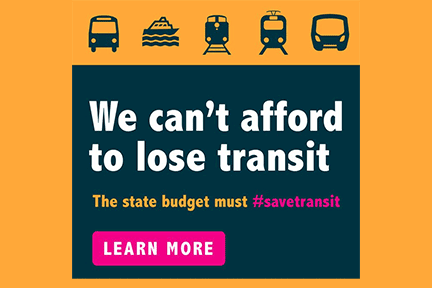Statement released last week From Board of Directors President Janice Li and General Manager Bob Powers:
BART is thankful for the recent action taken by the California State Legislature to restore $2 billion for the Transit and Intercity Rail Capital Program. The program is vital in funding transformative capital improvements to modernize public transportation systems such as BART.
The fate of transit operating budgets, however, presents a do-or-die decision point.
Each day BART moves closer to plunging off the fiscal cliff if the State does not provide short-term financial aid to fund transit operations.
One-time federal funds are dwindling even with BART’s stringent cost controls and will be exhausted by early 2025. If transit operations funding is not included in this year’s State budget, BART must begin making severe cuts to service and staffing, as early as this year. The State has the opportunity – and the power – to sustain BART, or let BART and the Bay Area economy fail.
Here’s how failure looks:
- Trains only once an hour.
- No trains on weekends.
- No trains after 9 p.m. on weeknights.
- Reduced service to San Francisco International and Oakland International airports.
- Some stations closed.
- Entire lines potentially shuttered
Those who will pay the biggest price for these severe cuts are those who can afford it the least. Sixty-seven percent of BART riders identify as non-white. Forty-four percent do not have a vehicle. Thirty-one percent have an income of $50,000 or lower. Seven percent are disabled. If the State fails to act, those who rely on BART as a lifeline will be stranded.
Everyone will pay the price if BART fails – even those who don’t use it. Traffic stands to drastically worsen across our already congested roadways and bridges, and regional greenhouse gas emissions will increase, further fueling climate change. Just one trip in a car emits the same amount of C02 as thirty trips taken on BART.
Businesses will struggle to move their goods with thousands more vehicles on already strained roads. BART service cuts to SFO and OAK will make tourism and convention travel unpalatable.
The Bay Area is an economic engine for the entire state, which represents the fourth largest economy in the world. But the regional economy isn’t ironclad. It needs effective public transit – BART, Muni, and other agencies – to thrive.
BART staff, labor partners and Board are focused on increasing ridership by improving the system.
Some highlights:
- Adding eight to 18 additional police officers to patrol trains each shift in addition to BART’s unarmed safety staff of Ambassadors, Crisis Intervention Specialists and Fare Inspectors on trains.
- A September schedule change means no rider will wait more than 20 minutes for a scheduled train, including nights and weekends.
- More than doubling the Clipper START discount for eligible low-income riders.
- A project to install 700 new fare gates at all stations by 2026 to deter fare evasion and increase safety.
- Thorough cleaning of train car interiors twice as often.
- Increasing the number of deep-clean teams by 66% to scrub heavily used stations.
These hard-earned gains for riders would be wiped out by severe service cuts. It’s a recipe for a death spiral.
If the State fails to act, not only will BART fail, but Bay Area public transit will fail. Ninety percent of all transfer trips in the Bay Area involve a connection to BART.
For BART and the Bay Area we know and love to survive, we need State help NOW
Additional Information
- Operating Financial Oulook Update & MTC’s Reimagined Short Range Transit Plan presentation given to the BART Board on October 2022
- Fiscal Cliff Fact Sheet
- Fiscal Year 2023 Reimagined Short Range Transit Plan, published on November 2022
Editors Note:
BART Board Refuses to Look at Service and Budget Cuts
As Bay Area Rapid Transit moves close to its $1 billion fiscal cliff in the coming years, its Board failed to consider what services would look like under a 10% cut.
The request came by Director Debora Allen who took issue that BART was seeing an 8% spending increase in operational cost while the agency was prepared to ask the state and public for more money. She sought to see if the Board was willing to look at what a 10% cut across the board would look like. — Full Story


4 comments
Let them fail. How much more money should we throw down this rabbit hole. Obviously the management can’t run the transit system. Sell or close it down. Taxpayers have paid an exorbitant about of money. Publish all monies they go through.
Long story short, BART is essentially trying to extort more of our tax dollars from the state by predicting “dire consequences” if the state doesn’t cough up the money. Perhaps we should be looking at many years of BART mismanagement as a root cause of its failure.
Typical response from BART. Give us more money or else. Like was previously mentioned let’s see where the current dollars are being spent. Has everyone forgotten about the $200k janitor? If we give them more money they will waste that and them come back asking for another “dire” emergency.
To borrow a bit a phrase from Ivan Drago, “If it dies, it dies.”
Good bye Bart. You started off as a good idea but through inept management, you’ve ran yourself into the ground.
Prioritize your law abiding paying customers over the feelings of criminals & hobos and maybe, just maybe, riders will come back. Also, patrol the parking lots so more gas thieves don’t torch multiple parked cars.
Comments are closed.